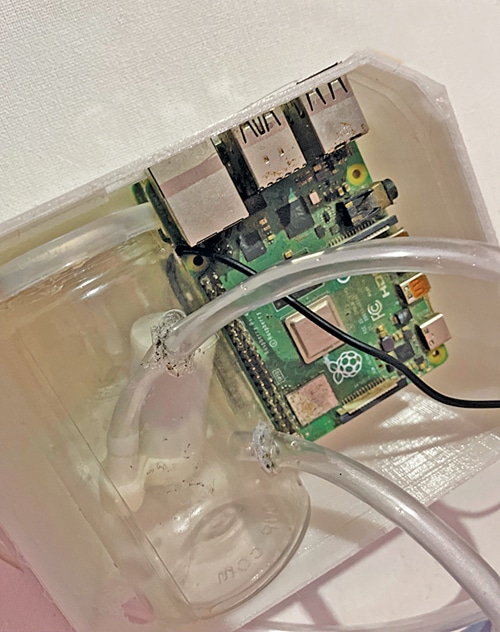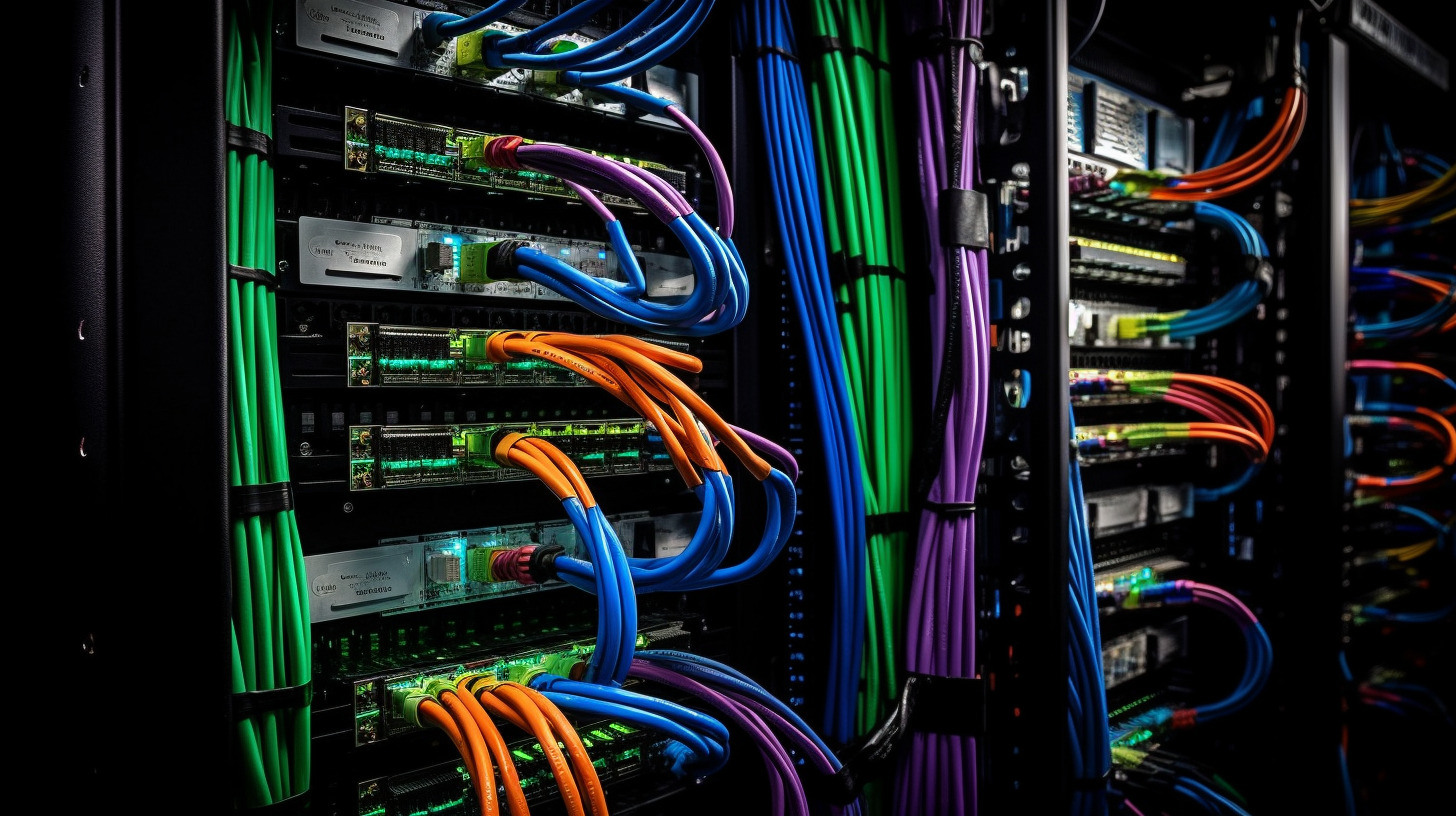Development Of China's Space-Based Supercomputer: Technical Aspects

Table of Contents
Challenges in Developing a Space-Based Supercomputer
Creating a space-based supercomputer presents a unique set of challenges far exceeding those encountered in terrestrial high-performance computing. The extreme conditions of space demand innovative solutions at every level of system design.
Harsh Space Environment
The space environment is incredibly hostile to electronics. Extreme temperature fluctuations, intense radiation, and the vacuum of space all pose significant threats to the hardware's reliability and longevity.
- Temperature Extremes: Components must withstand drastic temperature swings, from the scorching heat of direct sunlight to the frigid cold of deep space shadows.
- Radiation Hardening: Cosmic rays and solar flares can cause single-event upsets (SEUs) and radiation-induced damage in electronics. Radiation-hardened components are crucial, often requiring specialized materials and manufacturing processes. This includes the use of specialized alloys and shielding to minimize damage.
- Vacuum Conditions: The vacuum of space can lead to outgassing and material degradation, affecting component performance and lifespan. Advanced sealing techniques and material selection are vital.
- Microgravity: The lack of gravity can also impact the functioning of certain components, necessitating specialized designs and testing procedures.
The need for robust cooling systems is paramount. Traditional air-cooling methods are ineffective in a vacuum, necessitating innovative solutions like liquid cooling systems or advanced heat pipes utilizing materials with superior thermal conductivity.
Power Constraints
Power generation in space is inherently limited. The available power directly impacts the size, complexity, and computational capabilities of the space-based supercomputer.
- Solar Power Limitations: Solar panels are a common power source, but their output fluctuates depending on sunlight availability and solar panel degradation over time.
- Nuclear Power: Radioisotope thermoelectric generators (RTGs) offer a more reliable, consistent power source, but they are expensive and raise safety concerns.
- Energy Efficiency: Minimizing energy consumption is crucial. This necessitates the use of highly energy-efficient processors, memory, and other components.
- Power Distribution: Efficient power distribution and management systems are essential to ensure all components receive the necessary power while minimizing losses.
Data Transmission and Communication
Efficient and reliable data transmission from the space-based supercomputer to ground stations is critical. The vast distances and the limitations of communication technologies in space pose significant challenges.
- High Bandwidth Needs: Processing enormous amounts of data requires high-bandwidth communication links.
- Low Latency Requirements: Real-time applications demand low latency, minimizing delays in data transmission.
- Laser Communication: Laser communication offers significantly higher bandwidth compared to traditional microwave communication, but it is more susceptible to atmospheric interference.
- Microwave Communication: Microwave communication is more established but offers lower bandwidth.
- Satellite Constellations: Utilizing constellations of satellites can enhance data relay capabilities and overcome limitations of single satellite communication.
Key Technological Components
The development of a space-based supercomputer relies on several advanced technological components, pushing the boundaries of current capabilities.
Advanced Processors and Memory
The heart of any supercomputer lies in its processors and memory. For a space-based system, these components must be exceptionally powerful, radiation-tolerant, and energy-efficient.
- Radiation-Tolerant Processors: Specialized processors designed to withstand the effects of radiation are essential for reliable operation.
- High-Density Memory: High-capacity, low-power memory chips are needed to store and access vast amounts of data.
- Quantum Computing Potential: While still in its early stages, quantum computing holds the promise of vastly enhanced computational power for future space-based systems.
- Neuromorphic Architectures: These architectures, inspired by the human brain, could offer improved energy efficiency and fault tolerance compared to traditional processors.
Specialized Software and Algorithms
Space-based computing requires specialized software and algorithms to handle the unique challenges of the environment.
- Fault Tolerance and Error Correction: Software must be highly robust, capable of detecting and correcting errors caused by radiation or other issues.
- Artificial Intelligence (AI) and Machine Learning: AI and machine learning can play a crucial role in managing the system, optimizing performance, and adapting to changing conditions.
- Optimized Algorithms: Algorithms must be optimized for energy efficiency and performance in the constrained environment of space.
Network Infrastructure and Interconnectivity
A robust network infrastructure is essential for a space-based supercomputer, particularly if it involves multiple satellites or distributed components.
- Inter-Satellite Links: Efficient and reliable communication links between satellites are needed to exchange data and coordinate operations.
- Data Routing and Management: Sophisticated data routing protocols are needed to manage the flow of data between different components.
- Space-Based Network Architectures: Novel network architectures may be necessary to handle the unique challenges of space-based communication.
Potential Applications and Benefits
A space-based supercomputer holds immense potential across various sectors, offering unprecedented capabilities.
Scientific Research
- Astronomy and Cosmology: Enabling detailed analysis of astronomical data, leading to breakthroughs in our understanding of the universe.
- Climate Science: Providing high-resolution climate modeling and predictions, aiding in climate change mitigation efforts.
- Particle Physics: Analyzing data from space-based particle detectors, furthering our understanding of fundamental particles.
Earth Observation
- Environmental Monitoring: Providing real-time data on environmental changes, including deforestation, pollution, and natural disasters.
- Resource Management: Assisting in the efficient management of resources like water, forests, and minerals.
- Precision Agriculture: Supporting advanced agricultural practices, optimizing crop yields, and improving resource utilization.
National Security
- Early Warning Systems: Enhancing capabilities for detecting and responding to threats.
- Space Situational Awareness: Improving the monitoring and tracking of objects in space.
Conclusion: The Future of China's Space-Based Supercomputing
The development of China's space-based supercomputer presents significant technological challenges, requiring advancements in radiation-hardened components, energy-efficient systems, and high-bandwidth communication. However, the potential rewards are immense, promising significant advancements in scientific research, Earth observation, and national security. The successful implementation of such a system would represent a major leap in space technology and high-performance computing, shaping the future of data processing and scientific discovery. To learn more about the exciting advancements in this field, we encourage you to explore further resources on space-based computing and the development of China's space-based supercomputer. The future of space exploration and technological progress hinges on such innovative endeavors.

Featured Posts
-
 Live Tv Chaos Bbc Breakfast Guest Interrupts Broadcast
May 21, 2025
Live Tv Chaos Bbc Breakfast Guest Interrupts Broadcast
May 21, 2025 -
 The Fallout From Abc News Layoffs Show Cancellations Possible
May 21, 2025
The Fallout From Abc News Layoffs Show Cancellations Possible
May 21, 2025 -
 Big Bear Ai Stock Buy Sell Or Hold An In Depth Analysis
May 21, 2025
Big Bear Ai Stock Buy Sell Or Hold An In Depth Analysis
May 21, 2025 -
 Bbai Stock Big Bear Ais Q1 Earnings Miss Expectations Shares Fall
May 21, 2025
Bbai Stock Big Bear Ais Q1 Earnings Miss Expectations Shares Fall
May 21, 2025 -
 Nyt Mini Crossword Solution March 5 2025
May 21, 2025
Nyt Mini Crossword Solution March 5 2025
May 21, 2025
Latest Posts
-
 Big Bear Ai Stock Buy Sell Or Hold An In Depth Analysis
May 21, 2025
Big Bear Ai Stock Buy Sell Or Hold An In Depth Analysis
May 21, 2025 -
 Big Bear Ai Bbai Investment Losses Contact Gross Law Firm Before June 10 2025
May 21, 2025
Big Bear Ai Bbai Investment Losses Contact Gross Law Firm Before June 10 2025
May 21, 2025 -
 Big Bear Ai Holdings Inc Accused Of Securities Violations
May 21, 2025
Big Bear Ai Holdings Inc Accused Of Securities Violations
May 21, 2025 -
 Big Bear Ai Stock Investment Pros Cons And Should You Buy
May 21, 2025
Big Bear Ai Stock Investment Pros Cons And Should You Buy
May 21, 2025 -
 Bbai Stock Big Bear Ais Q1 Earnings Miss Expectations Shares Fall
May 21, 2025
Bbai Stock Big Bear Ais Q1 Earnings Miss Expectations Shares Fall
May 21, 2025
